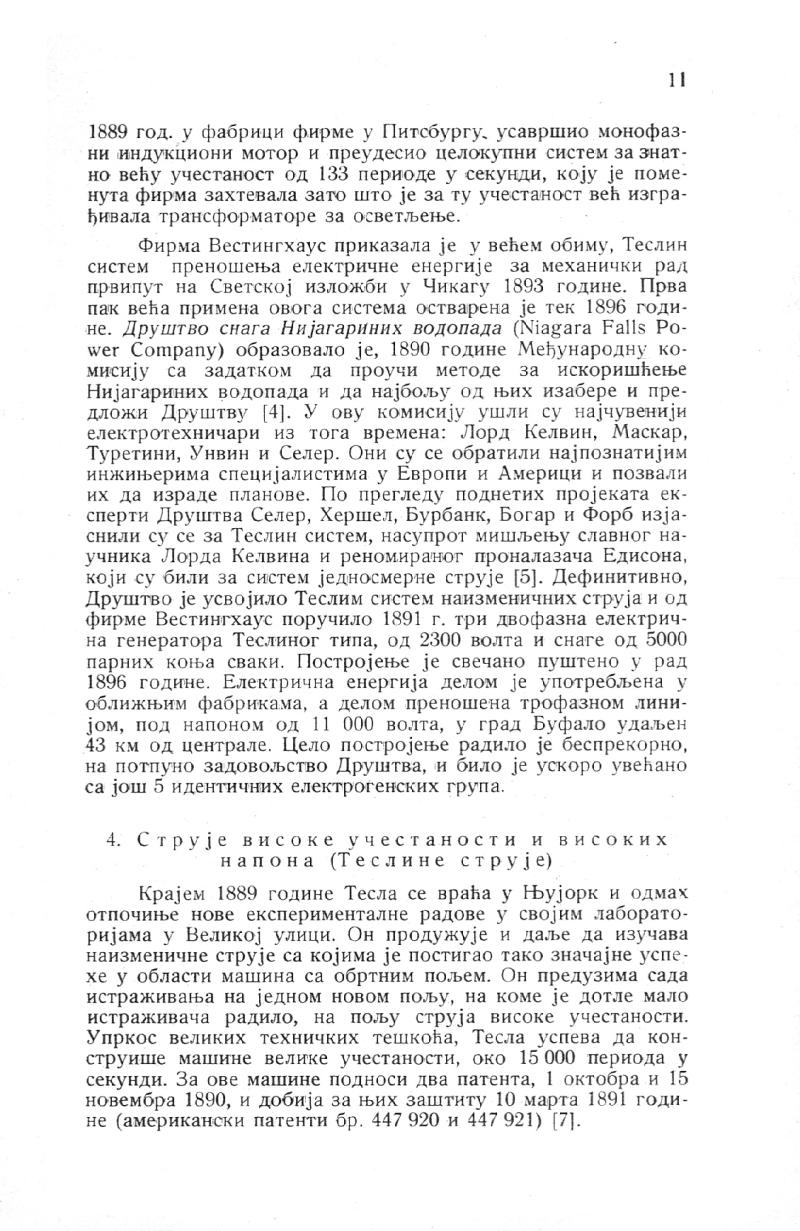
Nikola Tesla Books
In 1889, at the companyâs factory in Pittsburgh, Nikola Tesla perfected the single-phase induction motor and designed an entire system with a significantly higher frequency of 133 periods per second. The firm required this frequency because it had already been constructing transformers for lighting at that rate.
Westinghouse presented Teslaâs system for the transmission of electrical energy for mechanical work on a larger scale at the Worldâs Columbian Exposition in Chicago in 1893. The first major application of this system, however, was achieved in 1896. The Niagara Falls Power Company formed the International Commission in 1890 to study methods for harnessing the power of Niagara Falls and selected the best one to propose to the Commission [4]. The commission included renowned electrical engineers of the time, such as Lord Kelvin, Mascar, Turrettini, Unwin, and Seller. They consulted the most famous engineers and specialists in Europe and America, inviting them to submit plans. After reviewing the submitted projects, experts from the Niagara Falls Power Company - Seller, Hershel, Burbank, Bogan, and Forb - opted for Teslaâs system, contrary to the opinions of Lord Kelvin and the famous inventor Edison, who favored direct current [5]. Definitely, the company adopted Teslaâs alternating current system and ordered three two-phase electric generators of Teslaâs type, each with 2300 volts and 5000 horsepower, from Westinghouse in 1891. The plant was officially put into operation in 1896. The electric power was partly used in nearby factories and partly transmitted through a three-phase line, with a voltage of 11,000 volts, to the city of Buffalo, 43 km away from the plant. The entire plant operated flawlessly, to the complete satisfaction of the company, and was soon expanded with five more identical power units.
4. High-Frequency Currents (Teslaâs Currents)
In late 1889, Tesla returned to New York and immediately began new experimental work in his laboratories on Grand Street. He continued to study alternating currents, with which he had achieved significant success in the field of machines with rotating magnetic fields. He now undertook research in a new field, where few researchers had worked before: high-frequency currents. Despite significant technical difficulties, Tesla succeeded in constructing machines with high frequencies, around 15,000 periods per second. He submitted two patents for these machines on October 1 and November 15, 1890, and obtained protection for them on March 10, 1891, through U.S. Patents No. 447 920 and 447 921 [7].
